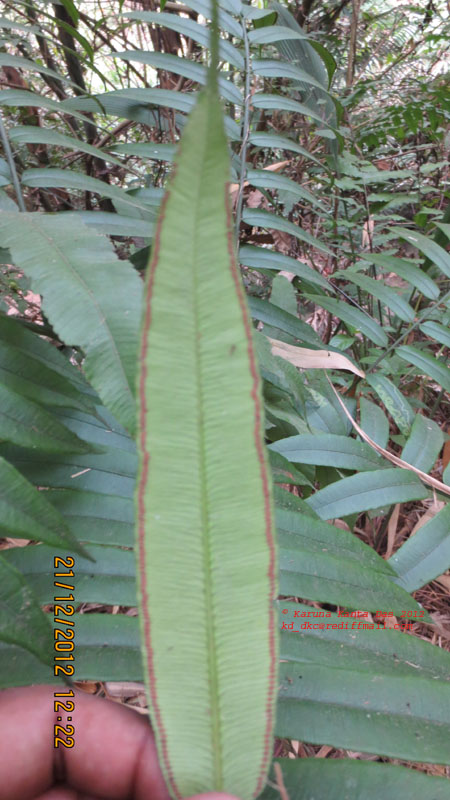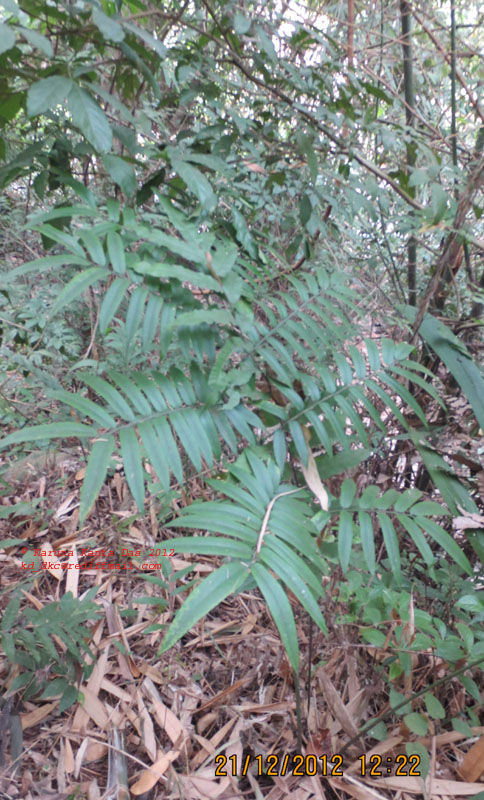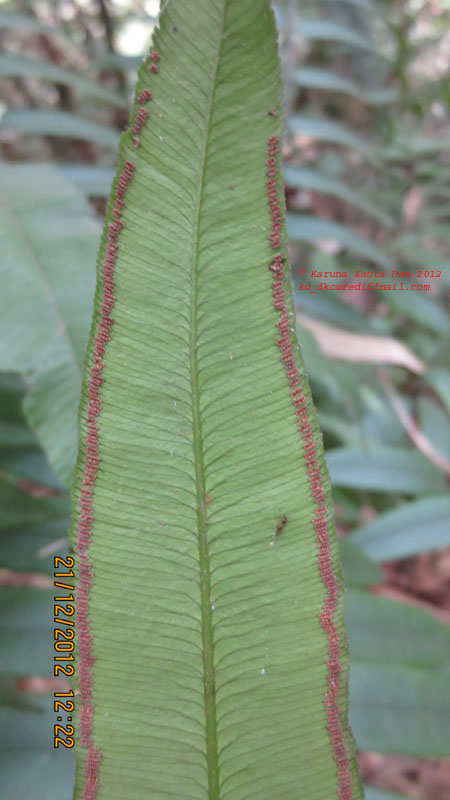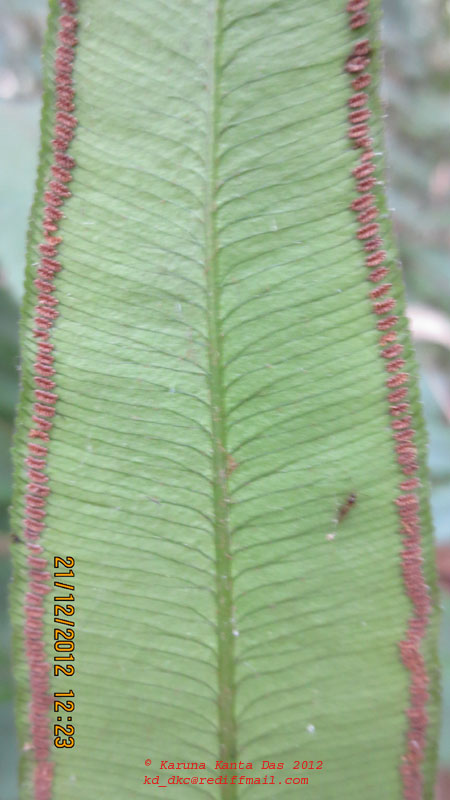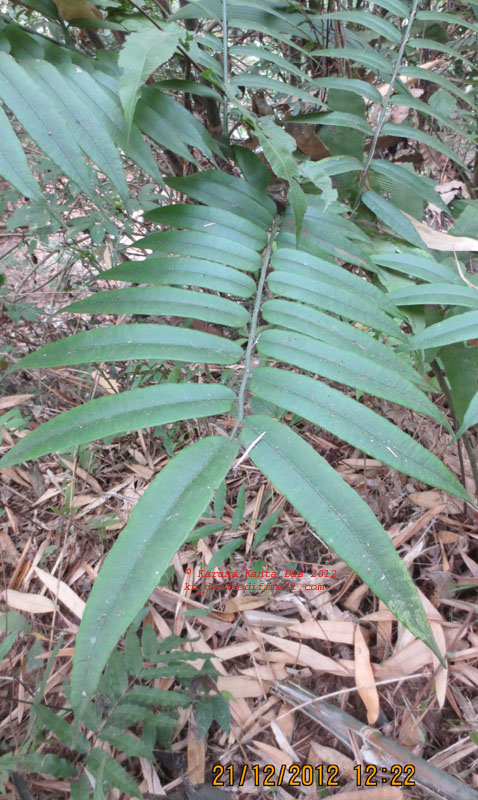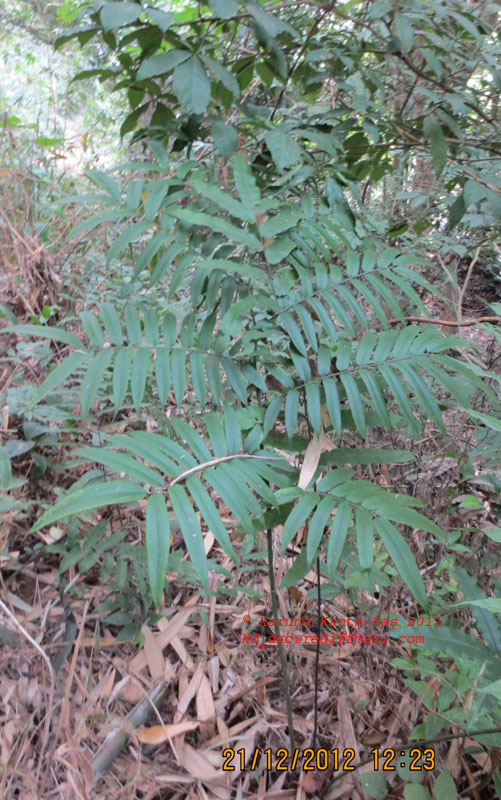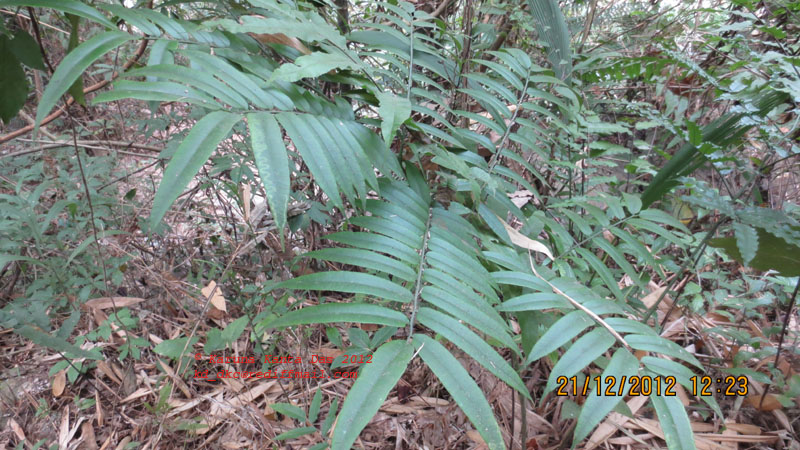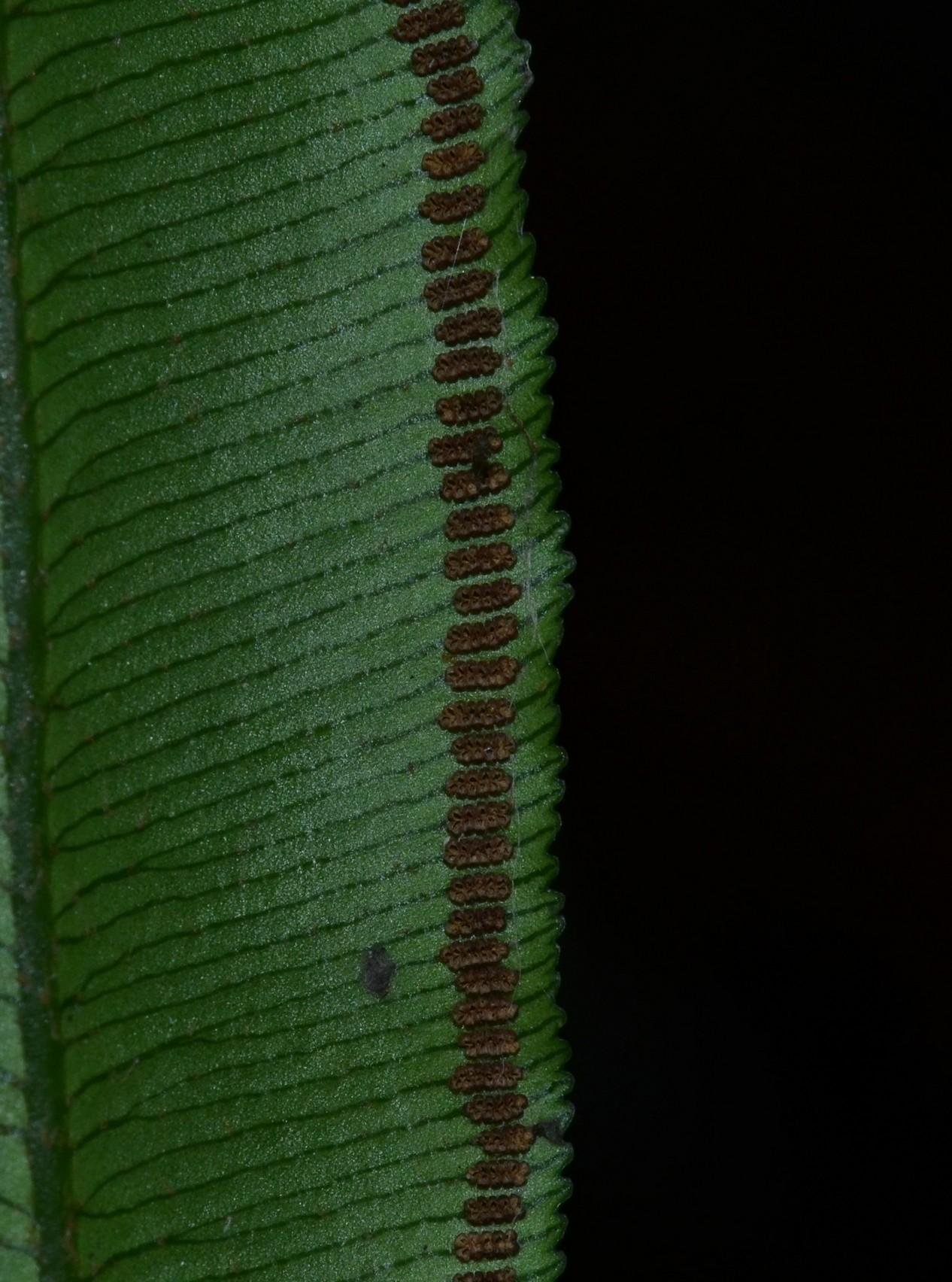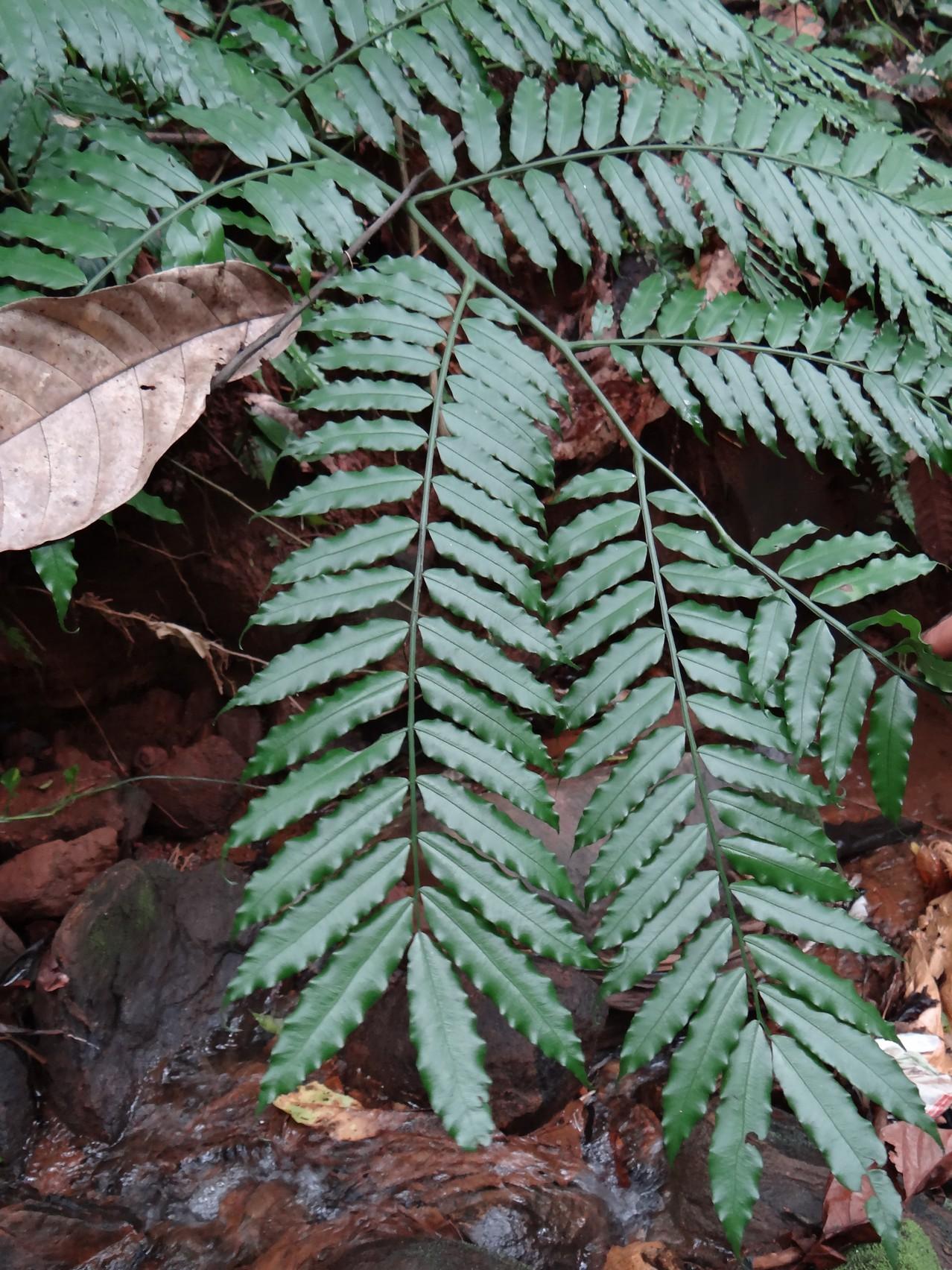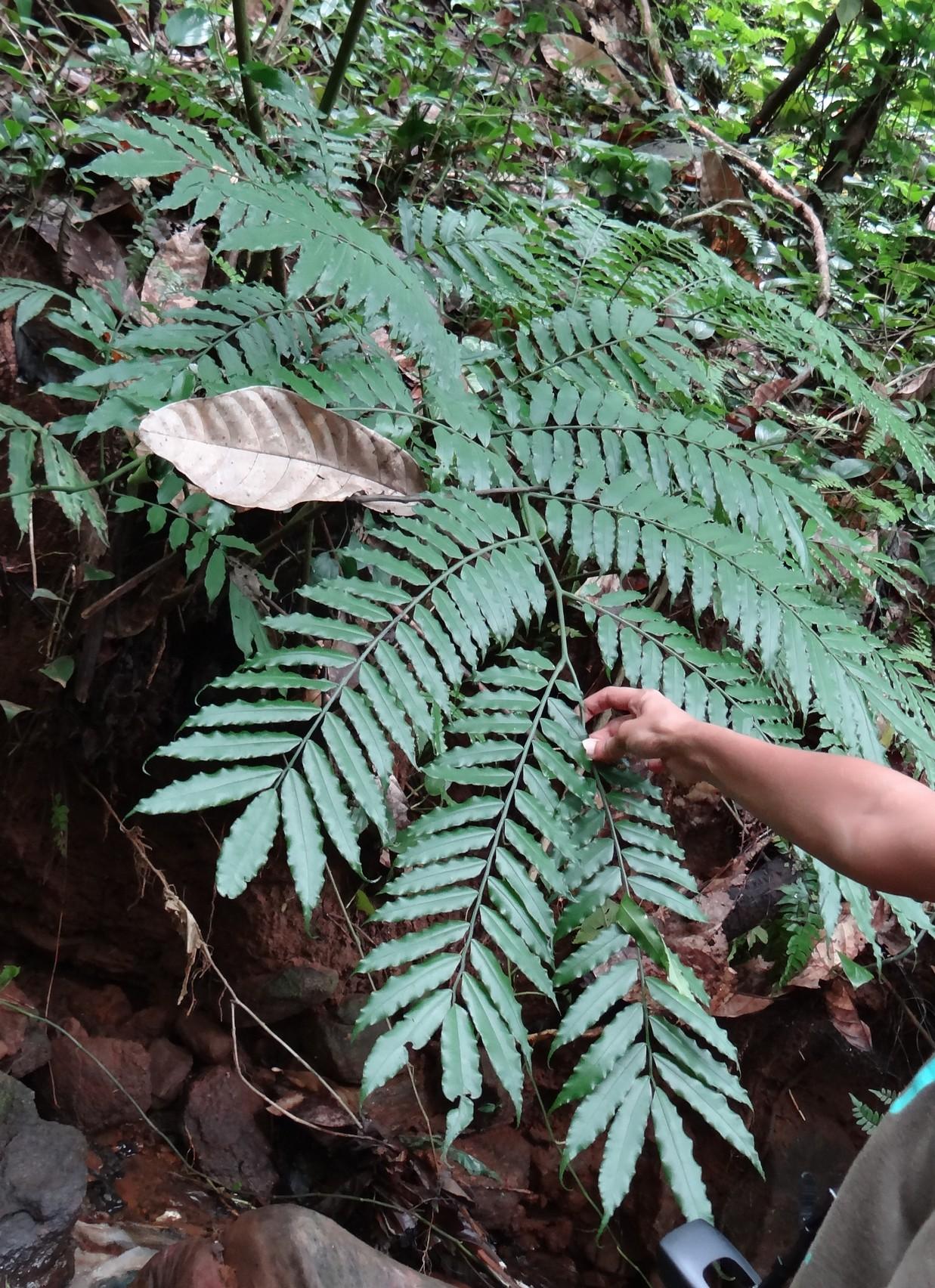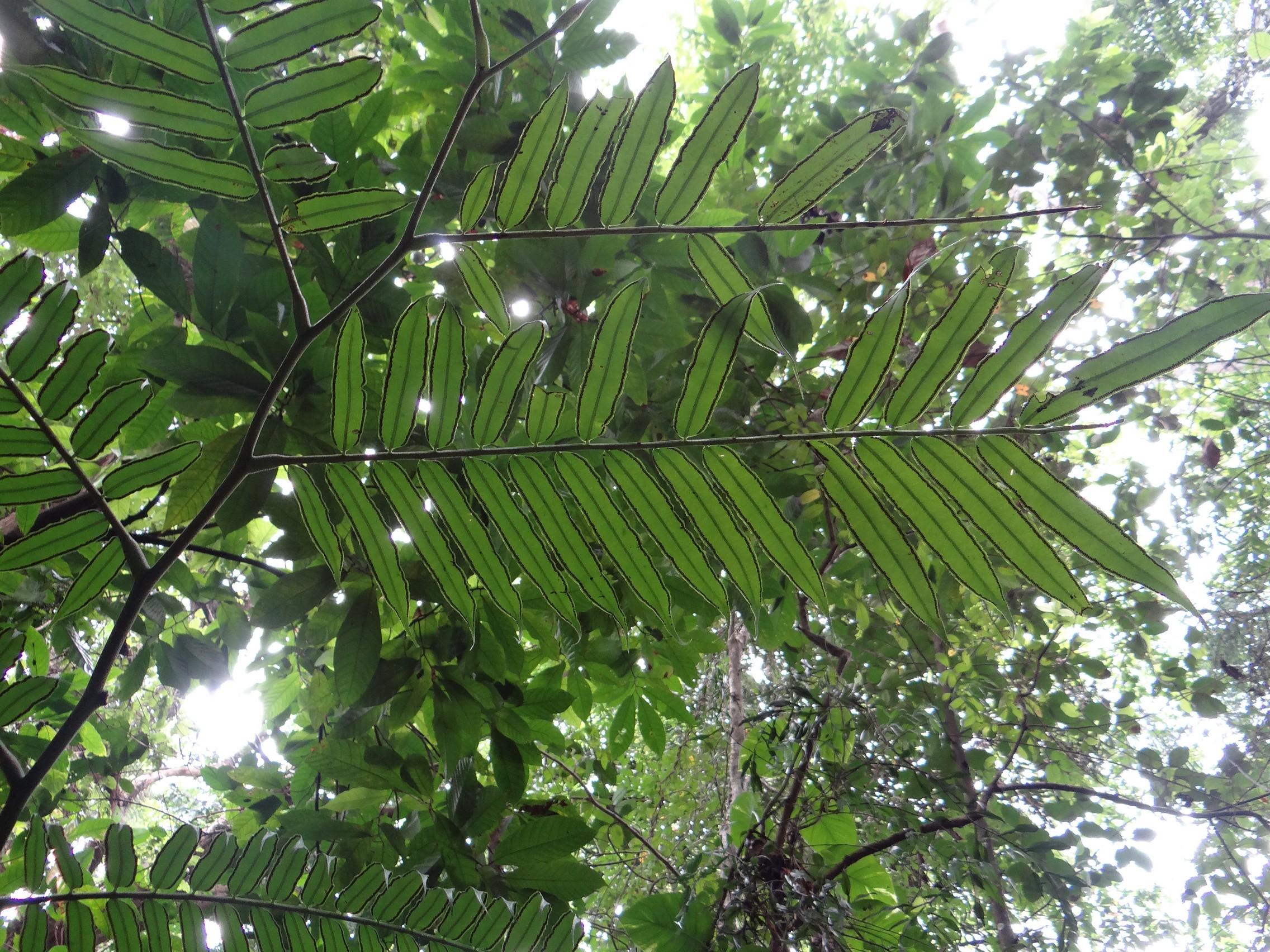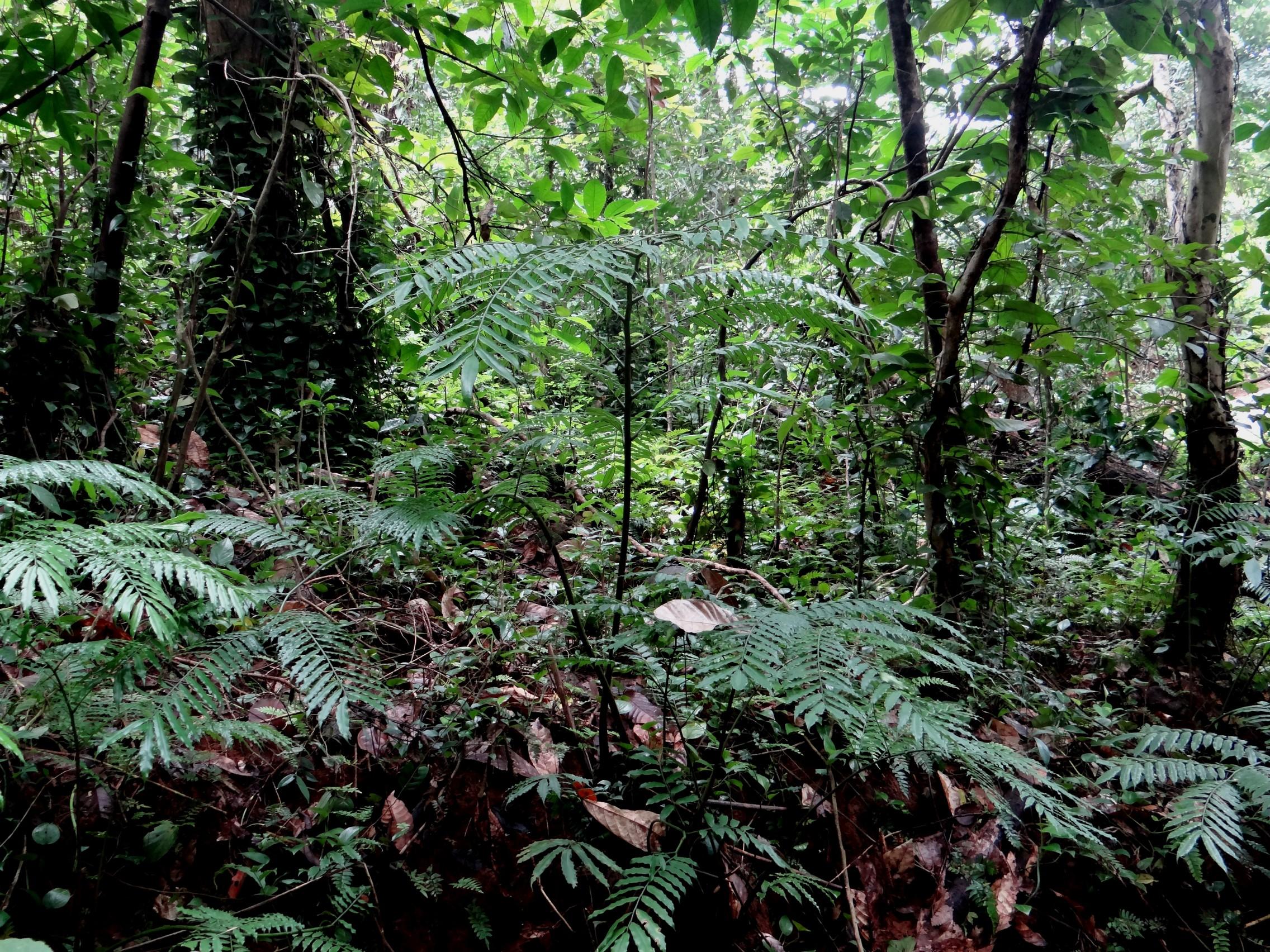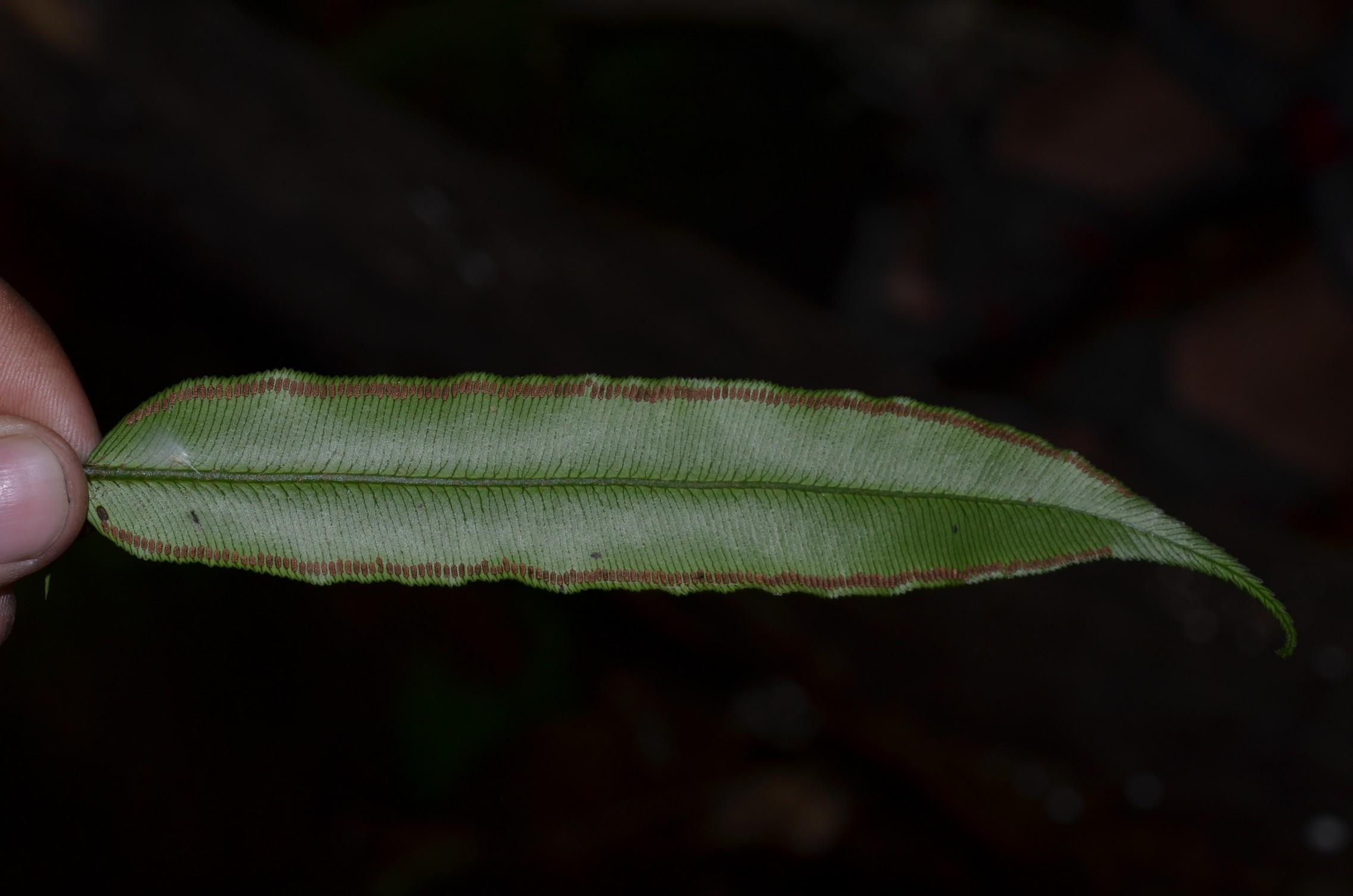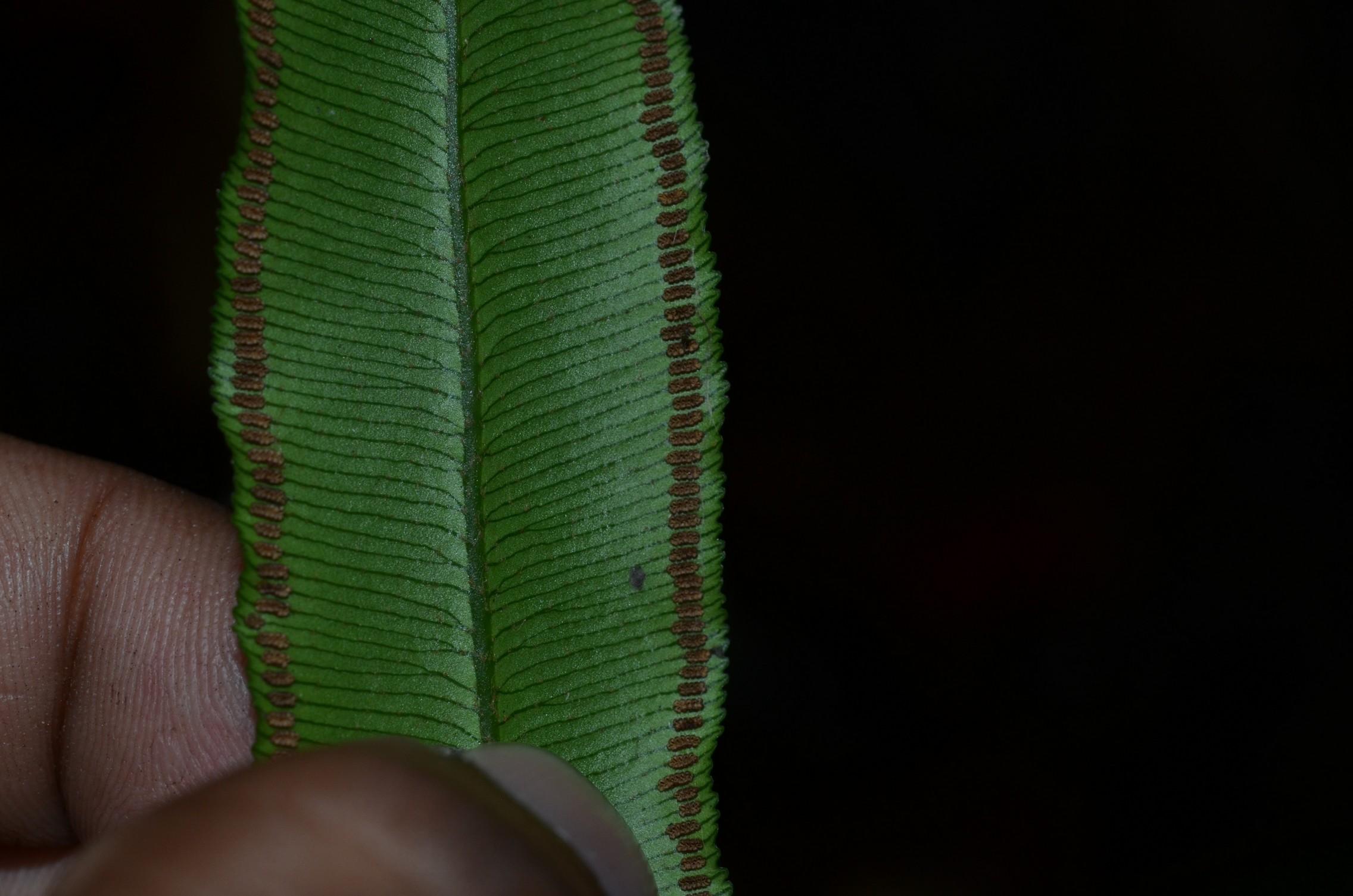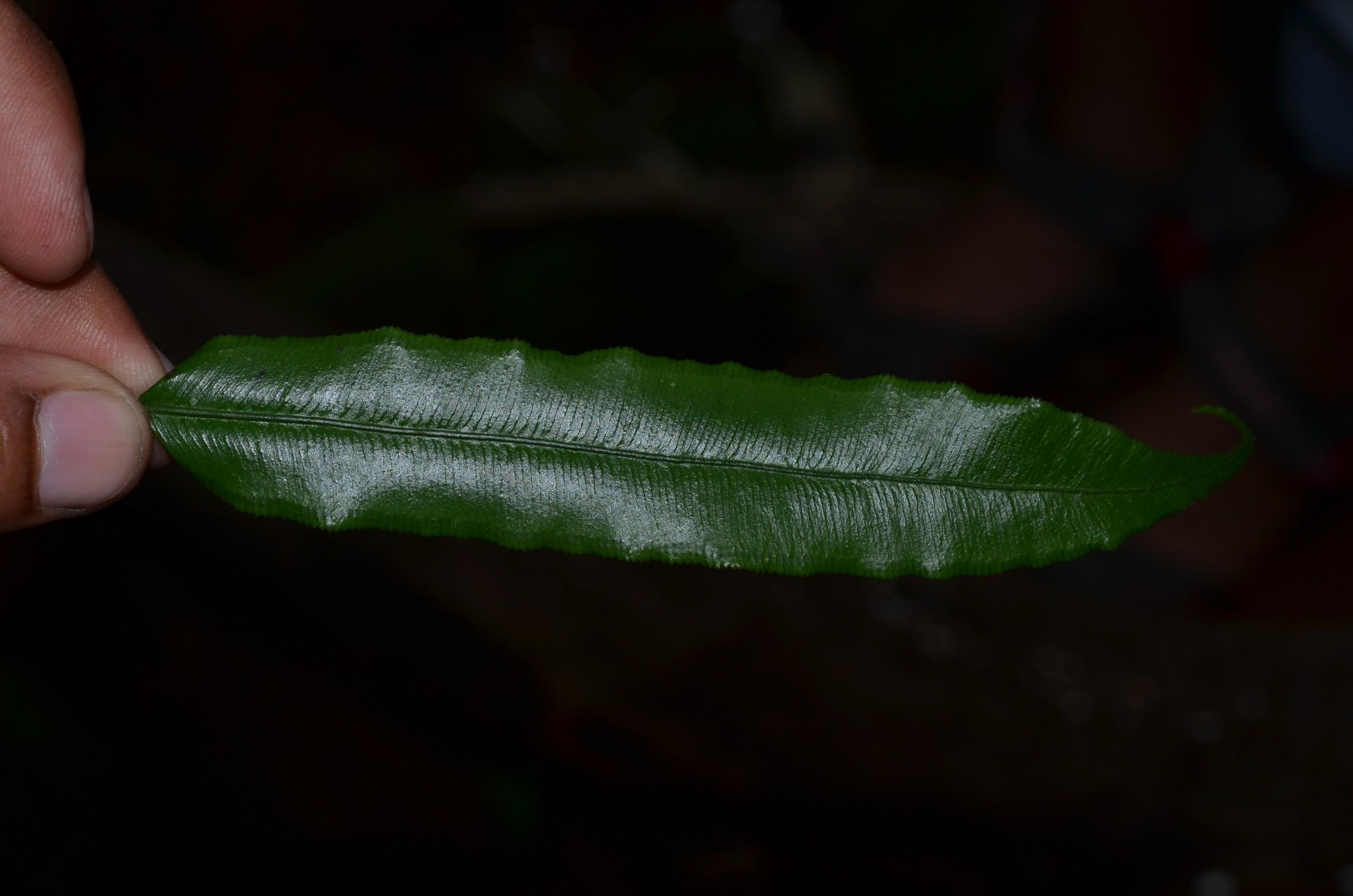|
Angiopteris helferiana C.Presl, Suppl. Tent. Pterid. 22. 1845; de Vriese, Mon. 22 1845. (Syn: Angiopteris campsophlebia de Vriese ; Angiopteris gaudichaudiana de Vriese ; Angiopteris griffithiana de Vriese ; Angiopteris hainanensis Ching ; Angiopteris late-marginata Ching ; Angiopteris leschenaultiana de Vriese ; Angiopteris macrocephala C.Presl ; Angiopteris macrophylla de Vriese ; Angiopteris magnifica Miq. ; Angiopteris marginata de Vriese ; Angiopteris neglecta Ching & Chu H.Wang ; Angiopteris polysporangia de Vriese ; Angiopteris repandula de Vriese ; Angiopteris salicifolia (C.Presl) de Vriese ; Angiopteris siamensis C.Chr. ; Angiopteris subcuneata Ching ; Angiopteris suboppositifolia de Vriese ; Angiopteris suboppositifolia var. longeacuminata de Vriese ; Angiopteris suboppositifolia var. polycarpa de Vriese ; Angiopteris sylhetensis de Vriese ; Angiopteris wightiana de Vriese ; Psilodochea salicifolia C.Presl);
.
Pakistan to China (Guangxi) and Peninsula Malaysia: Andaman Is., Bangladesh, China Southeast, Hainan, India, Malaya, Myanmar, Pakistan, Sri Lanka, Thailand as per POWO; . Angiopteris evecta (G. Forst.) Hoffm. a vulnerable fern from Kamrup district , Assam: Date : 21.12.2012
Location: Rani forest (Kamrup district)
Family : Marattiaceae
Genus & species : Angiopteris evecta (G. Forst.) Hoffm.
Habitat: Grows wild on hilly placesHabit :Shrub
Angiopteris helferiana Ah yes, that’s better – I can see immediately now the inframarginal sori – it is Angiopteris helferiana (please bear in mind that A. evecta is not even within 5000 miles of India!) – the commonest Angiopteris in India. It is not a threatened or rare fern in India, nor vulnerable, but occurs in thousands of localities wherever there is forest and streams. I have myself found it in many places in Assam state, though I agree ferns in general are being cut and burnt down enormously in Assam along with all the forested areas. But it can’t qualify as under threat in Assam, as it often grows in damp, overgrown ditches in many localities – in fact I seldom don’t find it whenever I look in ferny places in Assam. Thank you very much Sir, for ID. Sir, I have identified my Angiopteris sp. as A. evecta with the help of reference material like “ The Ferns of Nagaland” by N.S. Jamir & R.R. Rao and “Assam’s Flora (Present Status of Vascular Plant) by Prefessor (Dr.) S. Chowdhury (Published by Assam Science Society and Environmental Council) etc. According to ‘The Ferns of Nagaland’ only one species of Angiopteris i.e. A. evecta (Forst.) Hoffm. is found in Nagaland. In this State it is common in dense natural forests, specially near water courses. One of the very variable species depending upon the habitat (written in Ferns of Nagaland in page no. 40). On the other hand there are two species of Angiopteris i.e. A. evecta (Forst.) Hoffm & A. assamica de Vriese ( synonym ofAngiopteris helferiana) are found in Assam [Assam’s Flora (Present Status of Vascular Plant)] According to this book the A. evecta is vulnerable in Assam [ page no. 325]. Unfortunetly when I visited the Experimental Garden (under BSI Eastern Circle, Shillong, Meghalaya ), Barapani, Meghalaya on October, 2012 with student, there they showed and told us Angiopteris helferianaas A. evecta. That specimen is now conserved in that garden. When I came to know from your reply that there is no Angiopteris evecta in India and neighbouring countries then I searched many reference material and found a research paper published in Jan.2012,(http://threatenedtaxa.org/ZooPrintJournal/2012/4.pdf ) where it was written that Angiopteris helferiana is known here as Angiopteris evecta. Sorry! didn’t mean that it was your paper that was for more impact – I just meant that that’s what happens too often in general! I often see rather common species said to be seriously threatened – field study was not extensive enough. But this particular one isn’t really rare enough to be a particularly threatened species. There are huge areas without decent forest any more, which are unsuitable for it, but whenever you get some small but good, damp patches of forest on small hills in the North-East it may be there. Contrast it with something like Pteridrys cnemidaria – gone from nearly all its 19th Century sites – in fact after 3 decades of very active and extensive botanising I only ever found it once – to my surprise, at Namdapha, Arunachal Pradesh in 1994 In fact I ought to report that some time, I suppose). Now that’s definitely threatened – it was always rare, but is now of very limited occurrence indeed.
Yes, all the literature, apart from Prof. Holttum at Kew and Alston’s notes at the BM, used to give only A. evecta – but following Holttum’s revision I found he was indeed quite right and I then made a considerable revision of Indian Angiopteris in 2008 – enabling us to fix a name for the common Indian Angiopteris, as A. helferiana (described from Myanmar). That’s how we came by the name – before that it was just a taxonomic mess, with scores of candidate names, and just about the only one we could know was NOT the Indian one was A. evecta! So most literature before 2008 gives just “A. evecta” sens. lat. – the Assam’s flora book was presumably just not aware of the taxonomic problems in the genus and had not researched it. A book which is more directly relevant is the Ferns of Assam by Borthakur & colleagues at Guwahati University – but it does contain a great many misidentifications and errors, which will not be corrected in future, I feel sure. I expect that may give “A. evecta” or one of the other names like A. crassipes. Barapani park came to know about its not being evecta through my ex-student, Dr. Benniamin, who has my 2008 book revising it and went down from Shillong a couple of years ago to put names on the ferns there, but it will still take some time for the message to become more widespread that it is not A. evecta – after all people are still using Pteridium aquilinum, Hypolepis punctata, Polystichum setiferum etc. etc. – all absent from India and published quite some time ago. It takes time, as well as people not being particularly happy to change a name that has been familiar to them for decades!
It would be good to get more information on the distribution of A. helferiana, A. indica and A. palmiformis in Assam State, too – all three are there (all under “A. evecta” of course!). I have quite a lot of collections of Angiopteris from different parts of Assam, but I doubt if I made any from N. Kamrup as I didn’t spot so many ferny areas, and one is always in a quandary – miss the bus and go to botanise, or catch the bus when it comes and miss the chance to find things!
All best wishes and happy investigations! ANOCT12/12 Fern for identification : 8 posts by 2 authors. Attachments (8)
Date: 12th September 2015 Angiopteris helferiana C. Presl Angiopteris helferiana C. Presl. (Angiopteridaceae) Angiopteris helferiana.
. References: POWO The Plant List Index Filicum: A Synopsis, with Characters, of the Genera, and an …, Volume 1 By Thom Moore |
Disclaimer
1. For any mistake in identification or for becoming efloraofindia e-group member (for contributing towards building of efloraofindia or otherwise), pl. mail to indiantreepix@googlegroups.com or itpmods@googlegroups.com
2. For better viewing of species’ pages, colour scheme & formatting is being followed as: Description of the species, Details of other flora species on the same page, Uses/ harms, Distribution, Abundance/ Location/ Flowering time & date, Habit & habitat, Etymology & pronunciation, Other interesting information, stories etc., Others, Botanical names, Common names, Main point of discussion below, Discussion about Botanical names.
Navigation
- Award for eFloraofIndia
- Colour scheme & formatting
- Copyrights, Permissions, Citations
- eFloraofIndia appreciated
- Names of Plants in India site
- Flowersofindia site
- Posting Guidelines
- For members’ information
- Logo, Tagline, Acronym
- Volunteers required
- ‘Pitamah’ of eFloraofIndia
- ‘अजेय’ ‘Ajey’ of eFloraofIndia
- ‘Saarthi’ ‘सारथि’ of eFloraofIndia
- ‘Jewel’ of eFloraofIndia
- ‘Grassman’ of eFloraofIndia

